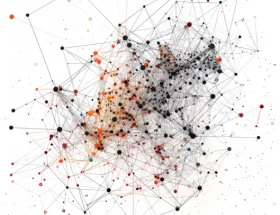Examining Cognitive Dimensions Through the Jouve-Cerebrals Test of Induction (JCTI) and the SAT
This study investigates the dimensions of general reasoning ability (gθ) by analyzing data from the Jouve-Cerebrals Test of Induction (JCTI) and the Scholastic Assessment Test-Recentered (SAT). Focusing on the Mathematical and Verbal subscales of the SAT, the research highlights distinct cognitive patterns, offering valuable insights into how these assessments relate to reasoning and language abilities.
Background
Standardized tests like the SAT and the JCTI have long been used to measure cognitive abilities across different domains. The JCTI emphasizes inductive reasoning, a core aspect of general intelligence, while the SAT includes Mathematical and Verbal sections that assess quantitative reasoning and language-related skills. This study seeks to understand how these assessments interact and what they reveal about underlying cognitive structures.
Key Insights
- General Reasoning and Inductive Abilities: The JCTI and the Mathematical SAT both align strongly with inductive reasoning, demonstrating their relevance as measures of general cognitive ability (gθ).
- Language Development in the Verbal SAT: The Verbal SAT, while still linked to broader reasoning skills, shows a stronger emphasis on language development, distinguishing it from the inductive reasoning focus of the other measures.
- Limitations of the Dataset: The sample size and the exclusion of top-performing SAT participants highlight the need for caution in generalizing findings, while also underscoring the potential for further research.
Significance
These findings contribute to the ongoing discourse on the psychometric properties of cognitive assessments. By clarifying how reasoning and language abilities are represented in the JCTI and SAT, this study supports a more nuanced understanding of the tests’ applications in educational and psychological contexts. Recognizing the strengths and distinct focuses of these tools can enhance their use in assessing cognitive potential and tailoring educational approaches.
Future Directions
The study suggests several avenues for further exploration. Expanding the dataset to include top SAT performers and other populations could validate and deepen the findings. Additionally, investigating the specific components of language and reasoning skills assessed by these tools may refine our understanding of their interrelations and improve the design of future cognitive assessments.
Conclusion
This analysis highlights the complementary roles of the JCTI and SAT in assessing cognitive abilities. The JCTI and Mathematical SAT align closely with general reasoning, while the Verbal SAT provides insights into language development. By integrating these findings, researchers and educators can enhance the use of standardized assessments in understanding and supporting cognitive growth.
Reference:
Jouve, X. (2010). Uncovering The Underlying Factors Of The Jouve-Cerebrals Test Of Induction And The Scholastic Assessment Test-Recentered. Cogn-IQ Research Papers. https://pubscience.org/ps-1ml2g-552578-YLVi










